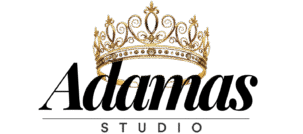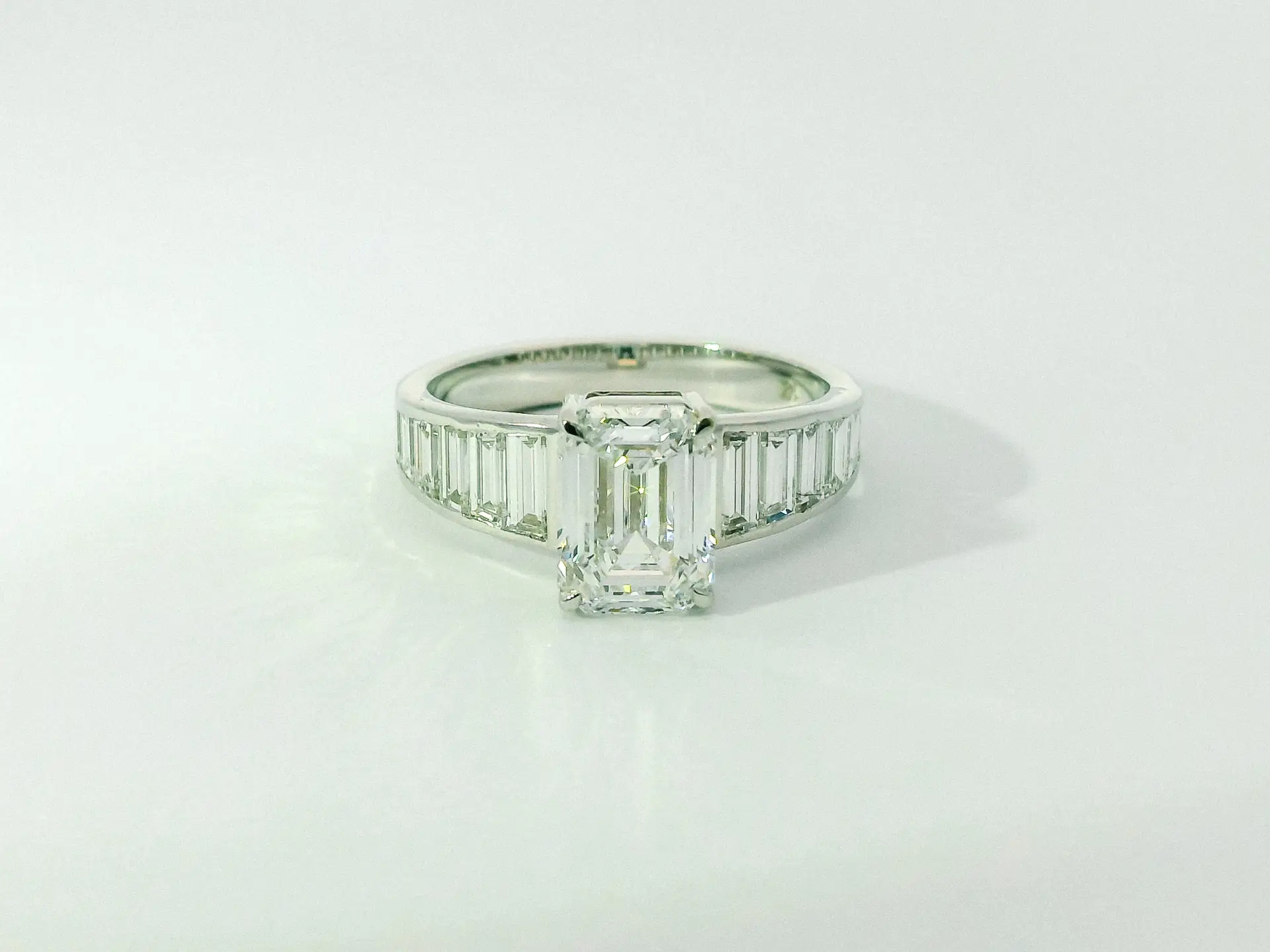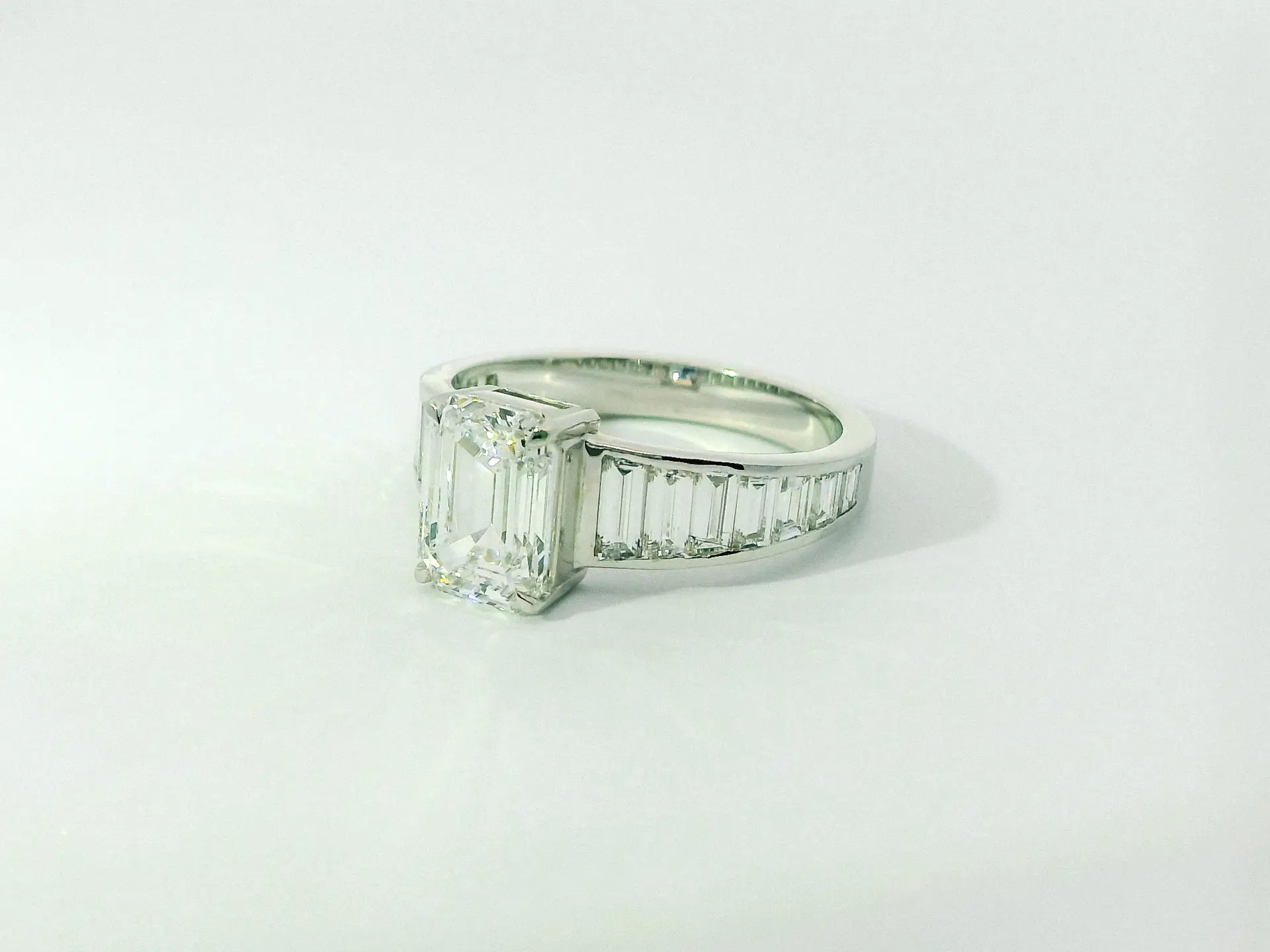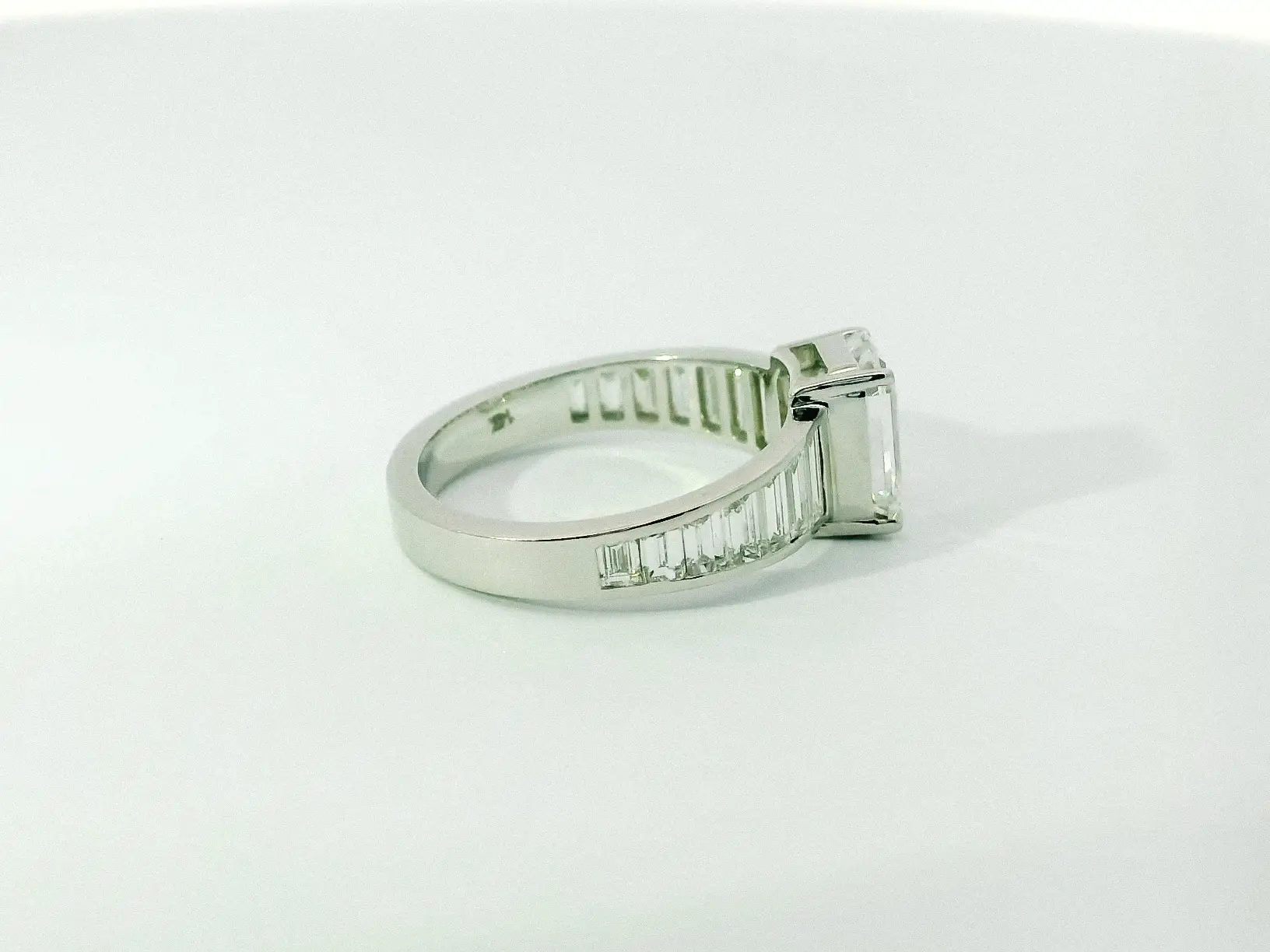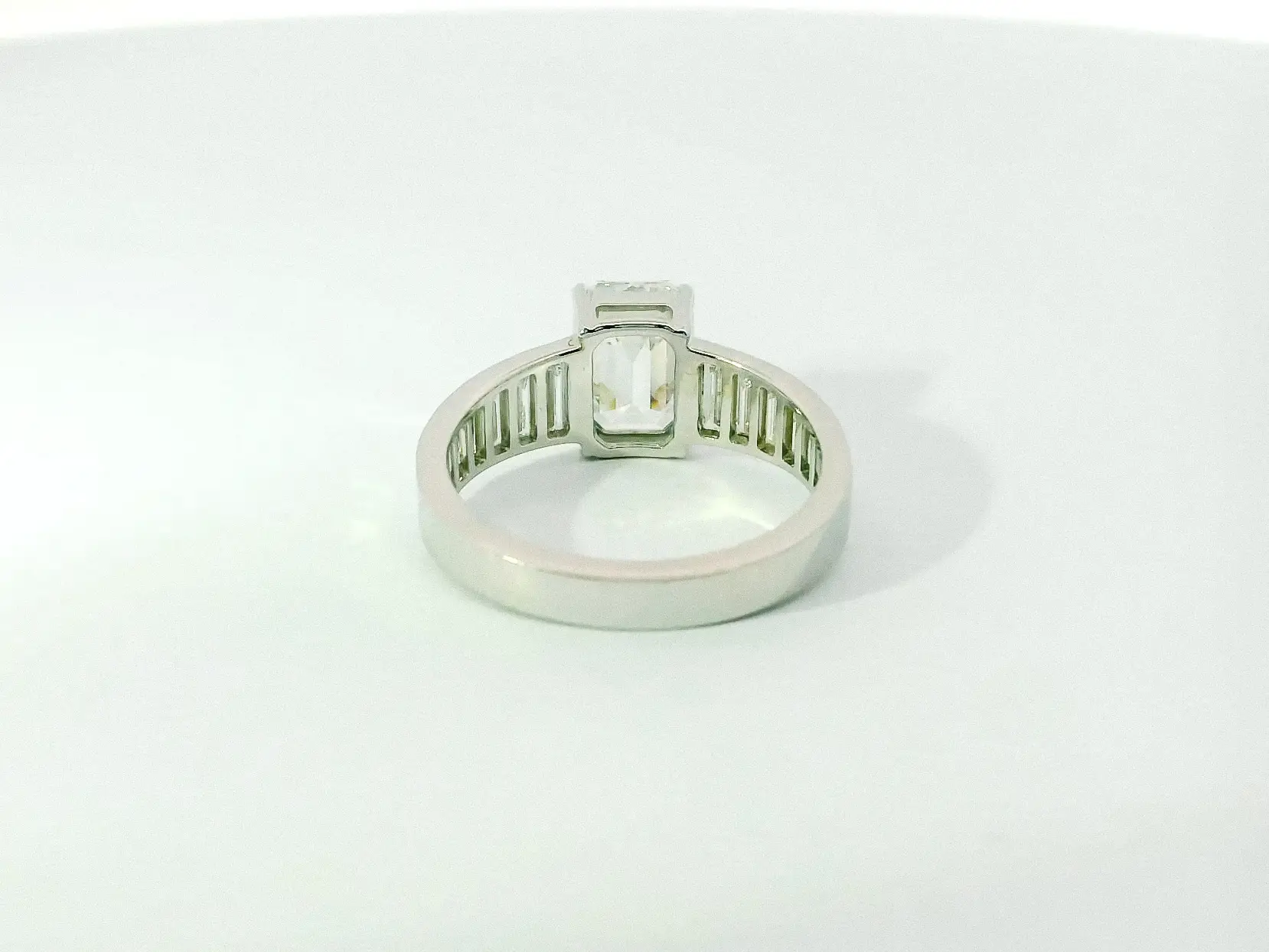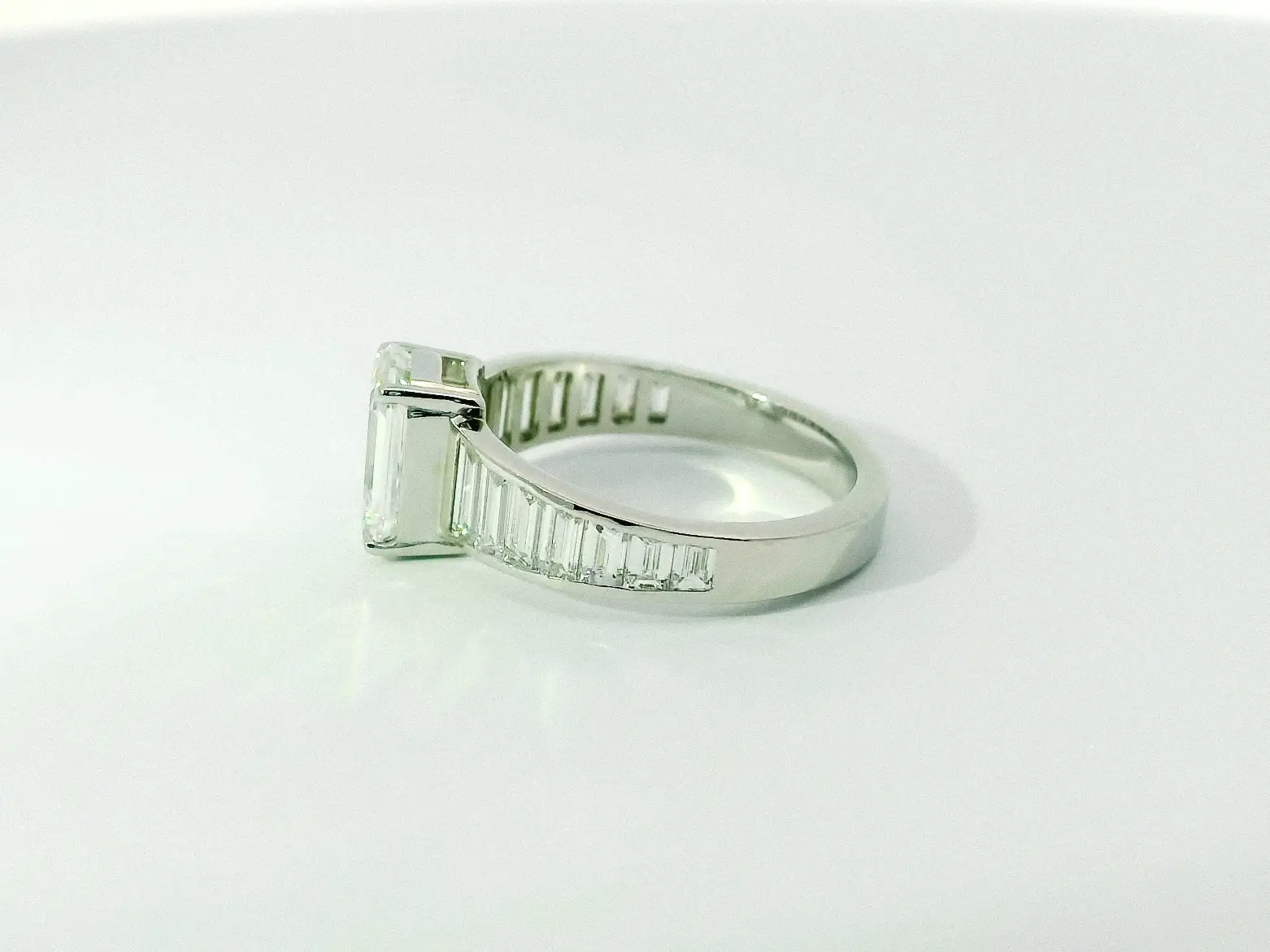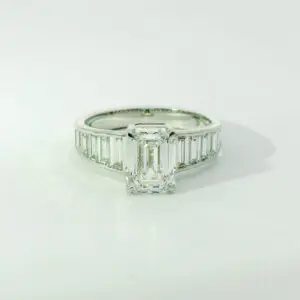Some rings whisper. Gabrielle walks in late, wearing sunglasses, and orders champagne.
With a 1.5-carat emerald-cut diamond at the centre and seven perfectly graduated custom-cut trapezoid diamonds (less is more? I don’t know her), this ring doesn’t just sparkle – it stages a full-blown light show.
The 4.4 carats of bezel-set trapezoids flow down the band like a hall of mirrors, bouncing brilliance in every direction. The 14k white gold setting keeps things sleek and icy, letting the diamonds do all the talking (which, in Gabrielle’s case, is more of a well-rehearsed mic drop). If you’re feeling bold, switch it up; yellow gold for a warmer glow, or go full main-character energy with ombré gemstones.
Her 2.5mm square band is designed for balance—because, sure, Gabrielle is dazzling, but she’s also built to keep up with you. Whether you’re shopping for vegetables, making an entrance, or casually outshining the room, she’s right there with you.
Who Is Gabrielle?
Gabrielle is the friend who always secures the best table at the restaurant, texts you “WTF” before you’ve even finished your dramatic story, and somehow knows your life plan before you do. She’s elegance without effort, confidence without arrogance, and proof that quiet power is the most magnetic of all. With Gabrielle by your side (or on your finger), you’ll never be overlooked again.
When you’re buying such a beautiful piece of jewelry, knowing your ring size is essential; no one wants a ring that’s too tight to get past the knuckle, or so loose it ends up in the sink drain. With these techniques and tips, you can measure your finger like a pro – no awkward jeweller visits required.
1. Using an Existing Ring
If you already have a ring that fits perfectly, this method is your best bet:
- Trace the Inner Circumference: Place your ring on a piece of paper and carefully trace the inner edge with a fine-tipped pen. Precision is key here!
- Measure the Diameter: Use a ruler or tape measure to determine the distance across the widest part of the circle. Match this to our size chart below.
- Pro Tip: Use digital calipers for hyper-accurate measurements. Borrow one from a handy friend or pick up an inexpensive one online.
2. Using String or Paper
For a quick and easy DIY option, grab a piece of string, dental floss, or paper: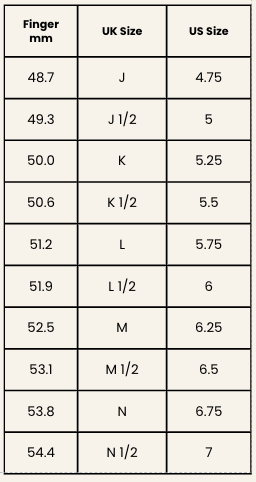
- Wrap and Mark: Wrap it around the base of your finger (where the ring will sit), mark where the ends meet, and then measure the length with a ruler.
- Watch Your Tension: It should be snug but not tight. Too loose, and your ring might slip off; too tight, and it won’t slide past your knuckle.
- Pro Tip: Repeat this method a few times to ensure consistency. Temperature and time of day can affect your finger size—fingers tend to swell in the evening or when warm.
3. Using a Finger Sizer
Invest in an inexpensive plastic finger sizer (or request one from us):
- Easy Read: Pull the end through the loop, snug it around your finger, and note the size.
- Test the Knuckle Fit: Your ring size should slide snugly over your knuckle without excessive force. If you’re between sizes, opt for the larger one.
- Pro Tip: Keep the sizer handy for future jewellery adventures!
Additional Tips for Accuracy:
- Account for Time of Day: Fingers are smaller in the morning or when cold, and larger in the evening or after activity.
- Knuckle Test: If your knuckles are wider than the base of your finger, measure both and choose a size that balances the two. Comfort-fit bands are a great solution for this.
- Consider the Band: Wider bands fit snugger than narrow ones. If your chosen ring is wide, you might want to size up slightly.
- Repeat for Assurance: It never hurts to double-check your size using more than one method.

